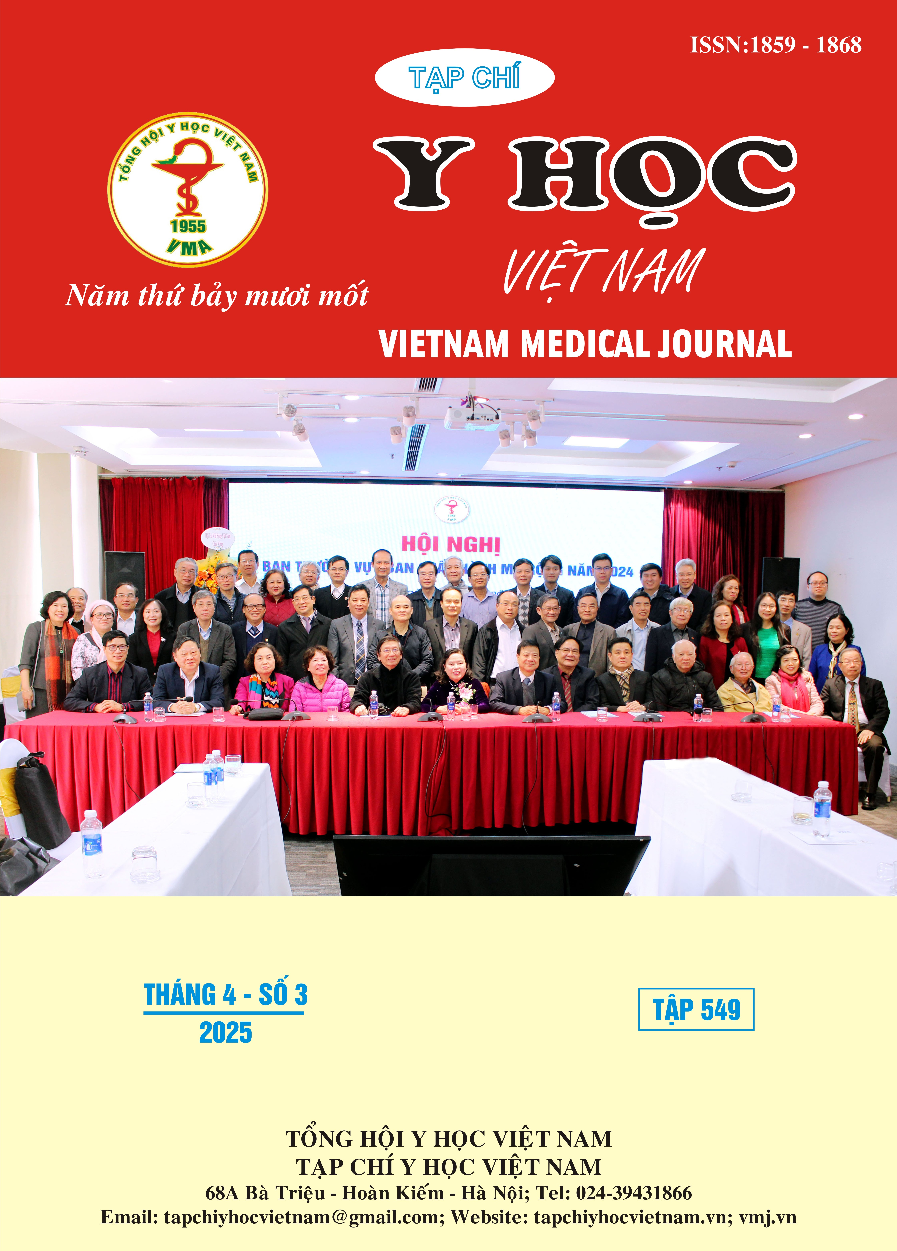ENDOTRACHEAL TUBE CUFF PRESSURE IN PATIENTS UNDERGOING LAPAROSCOPIC SURGERY
Main Article Content
Abstract
Background: The endotracheal tube (ETT) cuff pressure should be maintained in a safe range of 20-30 cmH2O. In clinical practice, ETT cuff inflation is still often performed subjectively by nurse anesthetists using the pilot ballon palpation technique rather than being accurately measured with a pressure gauge. As a result, ETT cuff pressure frequently falls outside the safe range, increasing the risk of complications for patients. Objective: To determine the prevalence of ETT cuff pressure falling outside the safe range when using the pilot ballon palpation technique in patients undergoing laparoscopic surgery. Methods: A descriptive cross-sectional study conducted on patients undergoing laparoscopic surgery under general anesthesia and mechanical ventilation, using cuffed endotracheal tubes. Results: A total of 100 patients scheduled for laparoscopic surgery were included in the study. The mean ETT cuff pressure using the pilot ballon palpation technique was 41.2 ± 22.3 cmH2O (ranging from a minimum of 10 cmH2O to a maximum of 130 cmH2O), with 74% of cases falling outside the safe range. Specifically, 12% of patients had an ETT cuff pressure < 20 cmH2O, while 62% had an ETT cuff pressure > 30 cmH2O. Additionally, there were three cases of excessive cuff inflation with ETT cuff pressure > 100 cmH2O. Conclusion: Maintaining ETT cuff pressure within the safe range requires the use of precise measurement devices and proper training for healthcare providers. Subjective methods, such as the pilot balloon palpation technique, have been proven unreliable, leading to a high prevalence of ETT cuff pressures falling outside the safe range and increasing the risk of patient complications.
Article Details
Keywords
cuff pressure, endotracheal tube, laparoscopic surgery
References
2. Chen RS, O'Connor L, Rebesco MR, et al. Prehospital intubations are associated with elevated endotracheal tube cuff pressures: a cross-sectional study characterizing ETT cuff pressures at a tertiary care emergency department. Prehosp Disaster Med. 2021;36(3):283-286.
3. Duarte N, Caetano AMM, Arouca GO, et al. Subjective method for tracheal tube cuff inflation: performance of anesthesiology residents and staff anesthesiologists: prospective observational study. Braz J Anesthesiol. 2020;70(1):9-14.
4. Gupta P, Tandon S, Dhar M, et al. A prospective observational study on changes in endo-tracheal tube cuff pressure and its correlation with airway pressures during various stages of robotic pelvic surgeries. J Anaesthesiol Clin Pharmacol. 2022;38(2):270-274.
5. Holyszko A, Levin L, Feczko J, et al. How to prevent endotracheal tube cuff overinflation: "5 for 25". AANA J. 2021;89(2):147-154.
6. Janossy KM, Pullen J, Young D, et al. The effect of pilot balloon design on estimation of safe tracheal tube cuff pressure. Anaesthesia. 2010;65(8):785-791.
7. Rosero EB, Ozayar E, Eslava-Schmalbach J, et al. Effects of increasing airway pressures on the pressure of the endotracheal tube cuff during pelvic laparoscopic surgery. Anesth Analg. 2018;127(1):120-125.
8. Seyed Siamdoust SA, Mohseni M, Memarian A, et al. Endotracheal tube cuff pressure assessment: education may improve but not guarantee the safety of palpation technique. Anesth Pain Med. 2015;5(3):e16163.
9. Stewart SL, Secrest JA, Norwood BR, et al. A comparison of endotracheal tube cuff pressures using estimation techniques and direct intracuff measurement. AANA J. 2003;71(6):443-447.
10. Turner MA, Feeney M, Deeds LJL, et al. Improving endotracheal cuff inflation pressures: an evidence-based project in a military medical center. AANA J. 2020;88(3):203-208.


